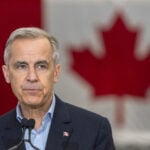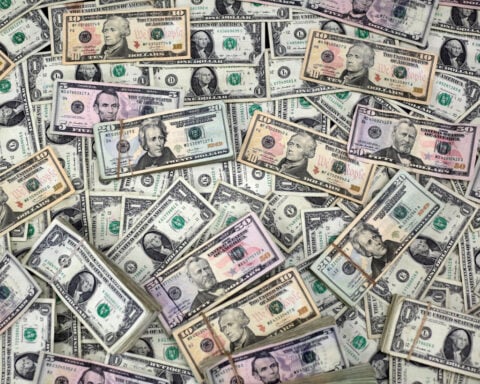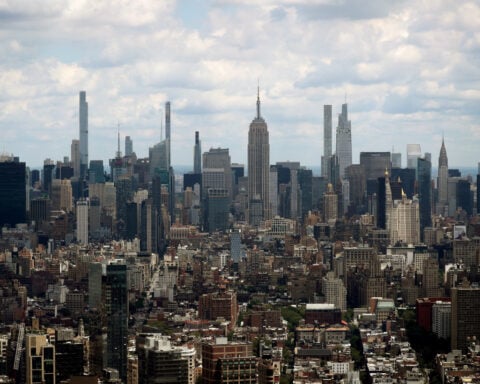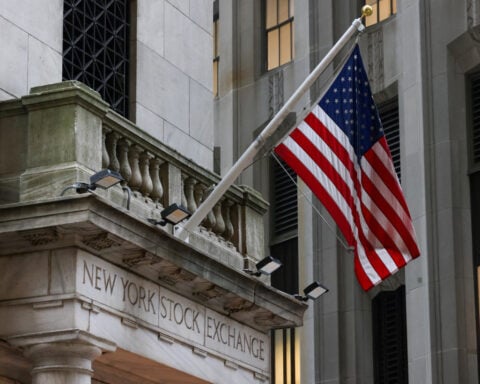By Lucia Mutikani

WASHINGTON (Reuters) - U.S. retail sales barely rose in May and data for the prior month was revised considerably lower, suggesting that economic activity remained lackluster in the second quarter.
The smaller-than-expected increase in retail sales reported by the Commerce Department on Tuesday, however, likely exaggerates the slowdown in consumer spending. Part of the decline in sales was because of lower gasoline prices, which weighed on receipts at service stations.
Nonetheless, inflation and higher interest rates are testing the resilience of consumers, with households generally prioritizing essentials and cutting back on discretionary spending. Tepid retail sales bolstered economists' expectations that the Federal Reserve could still start cutting interest rates in September. U.S. central bank officials last week saw the anticipated rate cut delayed to perhaps as late as December.
"Maybe households aren't quite as impervious to higher interest rates as we were beginning to believe," said Paul Ashworth, chief North America economist at Capital Economics. "Admittedly, we don't expect a full-blown slump in consumption but, at the margin, even a modest slowdown in consumption growth and consequently GDP growth too could be enough to tip a finely balanced Fed in favor of a rate cut in September."
Retail sales rose 0.1% last month after a downwardly revised 0.2% drop in April, the Commerce Department's Census Bureau said. Retail sales were previously reported to have been unchanged in April. Economists polled by Reuters had forecast retail sales, which are mostly goods and are not adjusted for inflation, gaining 0.3% in May.
Data for March was revised slightly lower. With price pressures moderating in May, economists estimated that inflation-adjusted retail sales rose 0.4% last month after declining 0.3% in April.
Retail sales have in recent months been distorted by an early Easter. Stripping out the volatility, the trend in sales growth has been slowing also as banks are tightening access to credit against the backdrop of lower-income borrowers increasingly struggling to keep up with their loan payments.
Though the labor market remains on a solid footing, it is becoming a bit difficult for people who lose their jobs to quickly find new work and wage increases are moderating.
Savings have also been whittled down. Still, the pace of spending is likely sufficient to sustain the economic expansion.
The Fed last week kept its benchmark overnight interest rate in the 5.25%-5.50% range, where it has been since last July. Policymakers projected only a single quarter-percentage-point reduction for this year. They, however, maintained their gross domestic product growth estimates.
Financial markets remain confident that the Fed's will start its easing cycle in September. Stocks on Wall Street were trading higher. The dollar slipped against a basket of currencies. U.S. Treasury yields fell.
MIXED PICTURE
The retail sales picture was mixed last month, with some areas of strength. Sales at gasoline stations dropped 2.2%, reflecting lower prices at the pump. Building material and garden equipment store sales sagged 0.8%.
Sales at food services and drinking places, the only services component in the report, slipped 0.4%. That was the biggest drop since January and followed a 0.4% advance in April. Economists view dining out as a key indicator of household finances. Food services and drinking places sales have dropped in three of the last five months.
"This category more broadly has been losing momentum as households pull back discretionary spending and move back towards eating at home," said Ellen Zentner, chief U.S. economist at Morgan Stanley.
Furniture store sales fell 1.1%. But receipts at motor vehicles and parts dealers rose 0.8%. Online store sales increased 0.8%, partially recouping the 1.8% decline in April. Sales at sporting goods, hobby, musical instrument and book stores increased 2.8% last month.
Receipts at electronics and appliance outlets gained 0.4%, while those at clothing retailers increased 0.9%.
Retail sales excluding automobiles, gasoline, building materials and food services rose 0.4% last month after a downwardly revised 0.5% drop in April.
These so-called core retail sales were previously reported to have dropped 0.3% in April. Core retail sales correspond most closely with the consumer spending component of GDP. The downward revision to April's core retail sales pointed to moderate consumer spending in the second quarter. That prompted economists at Goldman Sachs to trim their GDP growth estimates for the quarter to a 2.0% annualized rate from a 2.1%.
The economy grew at a 1.3% pace in the first quarter.
There was some encouraging news on manufacturing, where a revival appears to be underway. The sustainability of the recovery, however, depends on how long borrowing costs stay at current levels as well as how much consumer spending slows.
Manufacturing output jumped 0.9% in May following a downwardly revised 0.4% drop in April, the Fed said in a separate report on Tuesday.
Economists had forecast factory production rebounding 0.3% after a previously reported 0.3% fall in April. Production at factories gained 0.1% year-on-year in May.
The increase in output in the sector, which accounts for 10.4% of the economy, was across the board. Durable goods manufacturing production increased 0.6%, while nondurable manufacturing production shot up 1.1%.
"Growth in manufacturing output looks set to be incremental in the second half of this year, and output likely will take until deep into 2025 to return sustainably to its 2022 level," said Ian Shepherdson, chief economist at Pantheon Macroeconomics. "High interest rates and waning pricing power will limit growth in business investment, while the relatively high level of the U.S. dollar will dampen external demand for manufactured goods."
(Reporting by Lucia Mutikani; Editing by Chizu Nomiyama and Andrea Ricci)

 Trump has begun another trade war. Here's a timeline of how we got here
Trump has begun another trade war. Here's a timeline of how we got here
 Canada's leader laments lost friendship with US in town that sheltered stranded Americans after 9/11
Canada's leader laments lost friendship with US in town that sheltered stranded Americans after 9/11
 Chinese EV giant BYD's fourth-quarter profit leaps 73%
Chinese EV giant BYD's fourth-quarter profit leaps 73%
 You're an American in another land? Prepare to talk about the why and how of Trump 2.0
You're an American in another land? Prepare to talk about the why and how of Trump 2.0
 Chalk talk: Star power, top teams and No. 5 seeds headline the women's March Madness Sweet 16
Chalk talk: Star power, top teams and No. 5 seeds headline the women's March Madness Sweet 16
 Purdue returns to Sweet 16 with 76-62 win over McNeese in March Madness
Purdue returns to Sweet 16 with 76-62 win over McNeese in March Madness







